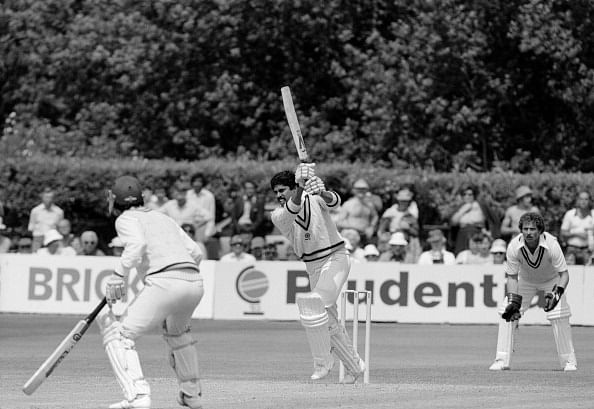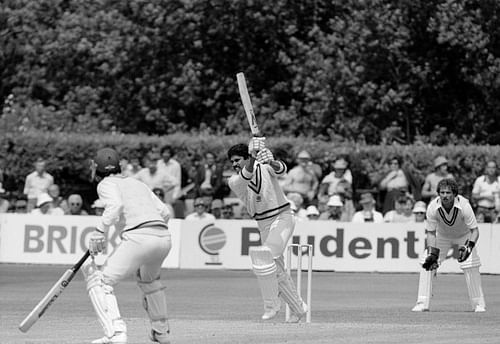
Why Kapil Dev's 175 against Zimbabwe is India's greatest ODI innings

India played their first ever one day International versus England at Leeds on July 13th 1974.
Although they lost the match by 4 wickets, they put up a formidable 265 all out in 53.5 overs with Brijesh Patel top scoring with 82 off 78 balls. It has been 40 years since that game and India have played a total of 862 ODIs since, winning 431 of them and losing 386 with 38 no results and 7 tied fixtures.
Some great knocks from Indian batsmen
Several incredible innings have been played by various Indian cricketers in ODIs in these four decades. Some of them that come immediately to mind are Sachin Tendulkar's 200 not out at Gwalior, Sourav Ganguly's 183 at Taunton, Virender Sehwag's 219 at Indore, amongst others.
To pick one innings out of all of them would indeed be a difficult task. Various factors like the opposition, the pitch, etc. need to be taken into account before concluding that this particular knock was the best by an Indian in ODIs.
Tendulkar's monumental 200 not out came in Gwalior versus a South African attack consisting of Dale Steyn, Charl Langeveldt and Jacques Kallis. Ganguly's 183 came against Sri Lanka on a belter at Taunton while Sehwag's record-breaking 219 came against a West Indies attack that had Ravi Rampaul and Sunil Narine as the only threats.
Kapil Dev’s 175
But if there is one innings that comes straight into that category of the best Indian innings ever played, it has got to be Kapil Dev's 175 not out against Zimbabwe at Tunbridge Wells in the 1983 World Cup. Purely on the basis of the situation India found themselves in, at the start of the match, this definitely has to be the greatest innings played by an Indian in ODI cricket, in my opinion.
India’s performance in ODI cricket at the time was not the best and as they went into the 1983 World Cup, few gave them a chance of winning the tournament.
However, victories over the mighty West Indies and Zimbabwe did raise a few hopes but those too were dampened by successive losses to the former and Australia in the next 2 games.
Thus, India headed into their game against Zimbabwe, their second versus them in the event, desperately wanting to win and stay in the competition. They won the toss and elected to bat on a bouncy pitch at Tunbridge Wells and got off to a disastrous start, losing 5 wickets for 17 runs as the Zimbabwean bowlers led by Kevin Curran made full use of the helpful conditions.
In walked the Indian captain at number 6, knowing clearly that he had a tough task on his hands.
The greatest rescue act
As the rescue act began, he lost couple of more wickets at the other end until he found an able ally in Syed Kirmani .The all-rounder started off cautiously, playing the ball on its merit before unleashing an array of strokes in the final overs to take India from an hopeless situation to a remarakable 266 for 8 at the end of their 60 overs.
He finished on an outstanding 175 not out off just 138 balls and shared a 126 runs stand with Kirmani, of which the wicket-keeper scored only 24. The Indian bowlers, led by Madan Lal who picked up 3 wickets, to bowl Zimbabwe out for 232 and registered a famous 34 run win, to remain alive in the competition.
The irony of the whole effort was that was that the match was not covered live by BBC, the broadcasters of the torunament as they were on a strike that day and hence no video footage of the game is available.
However, that should take nothing away from the brilliance of that innings and the significance it had on India going on to lift the trophy that year.